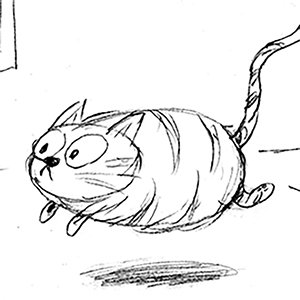New SUV Review - 2008 Land Rover LR2
Johnny Cash "walked the line" -- and that's Land Rover's delicate situation, too. People expect LR vehicles to be leaders in off-road capability -- as well as on-road civility.
The two are not easy to reconcile.
It's an especially acute challenge for Land Rover's entry-level crossover SUV -- formerly the Freelander but now called LR2 (in the U.S. market, anyhow). It is the only Land Rover model not built on a truck-style chassis -- and the only Land Rover model that doesn't offer Low range gearing and a two-speed transfer case. These are inherent limitations when it comes to serious off-roading, yet the LR2 must be able to keep up with its siblings in the lineup when the going gets sloggy. Or at least, not embarrass itself.
Given the car-type layout and what appears at first glance to be a typical car-type AWD system, you'd be right to be skeptical. And cautious about subjecting the LR2 to anything more serious than some snow on the driveway. No Low range? No way!
And yet, the LR2 will go places and tackle terrain (including sand dunes) you might be nervous about in an LR3 or Range Rover. It may not have Low range. But it does have guts.
Credit electronic intervention -- in the form of Land Rover's multi-function Terrain Response Control. This system, which is also used on the LR3 and Range Rover, has four settings -- General Driving (for normal conditions, on-road), Grass/Gravel/Snow (for slippery conditions, both on and off-road), Mud & Ruts (severe off-road driving) and Sand. The system works by automatically and continuously altering the power split, front to rear, according to conditions -- and uses the stability control, traction control and ABS systems to keep the power flowing to the ground, not just spinning the tires. Throttle "tip in" is also regulated, so that even if you give it too much pedal for conditions, the system will prevent too much power from being applied.
But the real key to the system is the Haldex center-coupling differential, which normally routes almost all the engine's output to the front-wheels -- but uses a hydraulically charged accumulator to immediately kick back as much power to the rear wheels as is necessary as driving conditions change. Hit it, and the LR2 squats as power flows to the rear -- then it lunges forward impressively. No wheelspin. No slip. No slide. You just go. Land Rover says the Haldex differential make sit possible to plant full torque to the ground upon application of full throttle in just 150 milliseconds.
The shifting characteristics of the standard six-speed automatic also vary depending on the setting you're in -- and the type of driving you're doing. This box offers both Standard and Sport settings, with manual shift control. It has a vent above the LR2's "water line" -- which is nearly 20 inches. Minimum ground clearance with the standard tires is 8.26 inches.
The LR2 also comes standard with Gradient Release and Hill Descent Control, which use the ABS and traction control systems to inch the vehicle down a steep grade without the driver having to ride the brakes -- or worry about the vehicle accelerating too rapidly and going "runaway."
The capability which results is nothing short of amazing, given the absence of a two-speed transfer case and 4WD Low range.
Land Rover took a bunch of journalists to Pismo Beach in California, where we took to the dunes in LR2s. Our experience there showed us the limiting factor was not the "light duty" AWD system -- but rather the LR2's stock tires. These are not M/S-rated and really aren't the hot ticket for off-roading of any sort. Still, the LR2 bullied its way up steep sandy inclines, getting stuck only when the driver's technique wasn't up to snuff. Even then, no winching was required -- just some words of advice on how to do it right from the off-road instructors Land Rover brought along for the ride.
A different driving style is required to get the most out of the LR2 off-road. The Terrain Response/stability control system is set up to give less yaw (side to side movement) and you have to get used to the more muted power delivery under hard charging, as when going up a slippery hill. It's more smooth and steady than Banzai! -- if that makes any sense. Initially, you might feel the thing's not gonna make it. It seems the computer is trying to slow you down by throttling back the power and pulsing the ABS to keep the wheels from spinning furiously. But then it just keeps on going and going. With some decent M/S-rated tires, the LR2 could probably go almost anywhere you'd take an LR3.
Which brings up a small complaint: Land Rover doesn't even offer M/S-rated knobbies as optional equipment for the LR2. The standard tire is an 18-inch "all terrain" tire that's basically a street tire designed for light-duty off-road work -- if that. The step-up tire is a sport tire on a 19-inch rim. The Land Rover people explained the absence of knobbies -- even optional knobbies -- as being decided upon for road noise reasons. But it seems at odds with all the commendable capability that's otherwise in this vehicle to not at least have them available on the menu for those who might actually wish to use all this wonderful built-in capability.
The other niggle's more subjective. U.S. buyers still won't see a diesel engine option -- even though European buyers will have that choice. Land Rover says ongoing concerns about U.S. diesel fuel (availability as well as quality) and pending emissions regs. (which are different than European regs.) caused them to rule it out for the North American market. That's too bad -- because a diesel SUV makes a lot more sense than a gas SUV -- both in terms of fuel efficiency as well as off-road grunt (the diesel's much-superior low-speed torque is a big help there).
Still, there's happy news underhood. The outgoing Freelander was a dog. Its puny 2.5 liter, 174-hp V-6 struggled under the yoke of nearly two tons of metal. The LR2 gets a new 3.2 liter straight six jointly developed with Volvo. This engine -- which is mounted transversely in the engine bay -- produces 230 hp (that's 76 hp more than the Freelander's 2.5 V-6) and234 lbs.-ft. of torque. Despite the curb weight increasing to well over 4,000 lbs., the LR2 reaches 60 mph in a very serviceable 8.4 seconds -- with a top speed of 124 mph. It cruises without strain at 80-plus -- which we did for hours on end during a several hundred mile drive in the rural California countryside.
With a tighter steering box (2.4 turns, lock to lock) and revised suspension (including front and rear anti-roll bars) the handling on-road is as impressive as the capability is off-road.
The max tow rating is 3,500-lbs.
You'll also note an entirely new exterior and interior -- blending LR3 (stepped roofline) and Range Rover (fender air extractors) cues together into a single handsome package. I spent nearly ten hours straight in a new LR2 without my rear end going numb or my back feeling like I'd been racked. Some new cars (let alone SUVs) will have you begging for the exits after as little as three or four hours of seat time. Back seat occupants enjoy the same level of comfort and spaciousness -- along with theater-style "command seating." With the back seats folded down, cargo capacity is almost 60 cubic feet -- among the best in class. A dealer-installed roof rack can expand the LR2's cargo-carrying capacity.
Land Rover also upped the ante in terms of amenities. All '08 LR2s come standard with a dual-section panorama sunroof, keyless ignition, bi-xenon headlights, adaptive lighting, rain-sensing wipers, park distance control and full leather trim. That's what you get for the $34,700 base MSRP. You can add GPS with a touch screen display, as well as a kicking 14-speaker Dolby Pro Logic II Surround Sound audio system with six-disc CD changer and MP3 player.
The end result is a vehicle that's substantially more capable off-road than its entry-luxury crossover competitors (Acura MDX, Lexus RX, etc.) but easily their equal when it comes to on-road manners and high-end finesse.
It walks the line... .
========
www.ericpetersautos.com (or EPeters952@aol.com) for comments







Comments